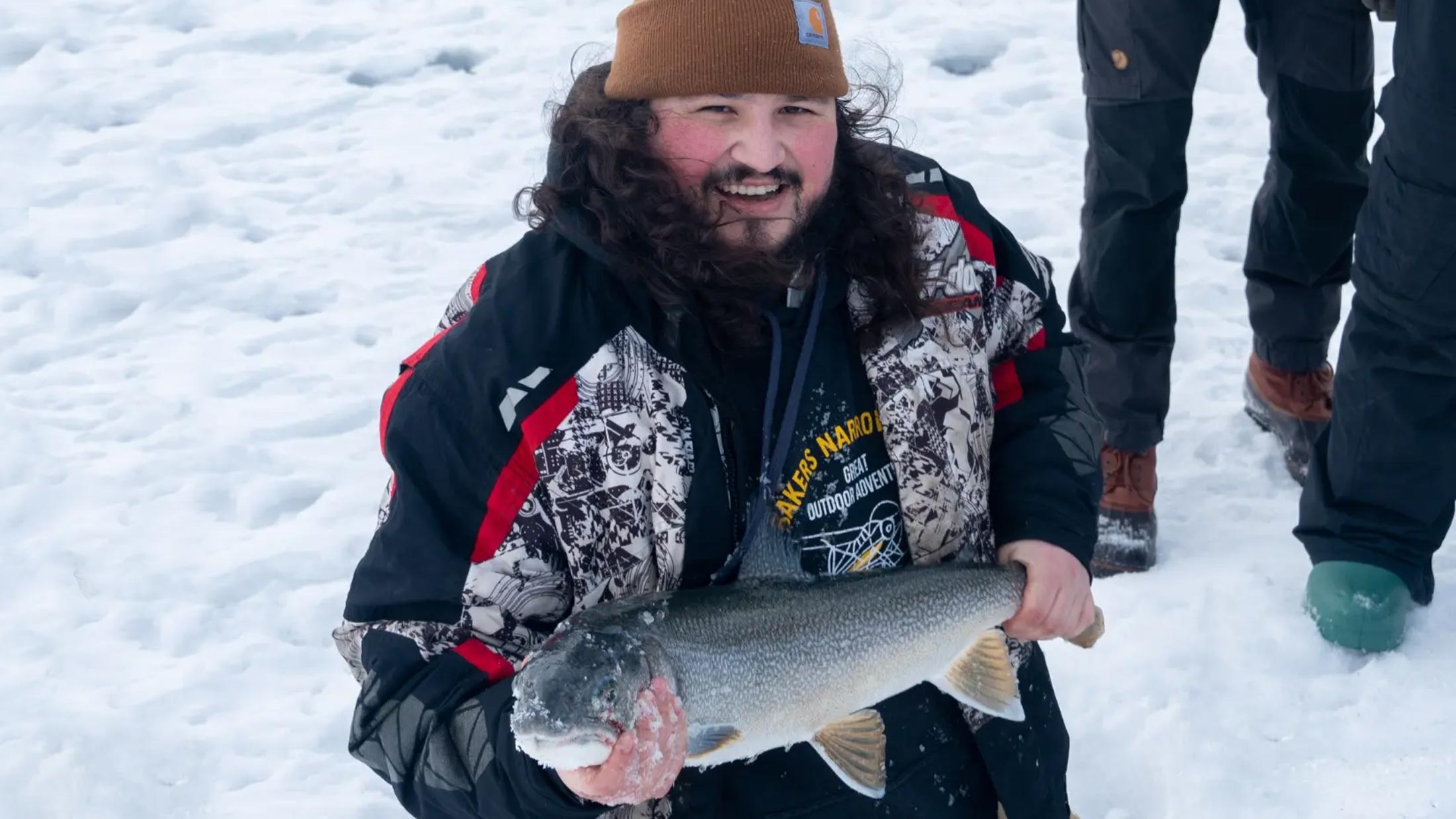Transition Year Program helped hunter find his footing as a conservation biologist
Helen Metella - 8 July 2024

Remington Bracher
Listening to Remington Bracher, ’24 BSc, speak eloquently about his passion for conservation, for traditional Indigenous practices, and for helping young people understand why those concepts should intersect, it’s hard to believe he ever had setbacks in school.
But at high school in the small town of Thorsby, Alta., he was a terrible student, he says. “I skipped class a lot. I didn’t find any of the subjects interesting and I hated sitting in a classroom.”
Bracher was far more engrossed by the outdoors, spending every weekend hunting, fishing and tending a trapline with his father, an avid outdoorsman.
His interest in post-secondary education was piqued by hearing about the University of Alberta’s Transition Year Program (TYP), run by First Peoples’ House. It’s for First Nations, Métis and Inuit students who may not be prepared to enter university through the regular admissions route. Students take first-year classes that teach academic skills, writing and study habits, and have access to tutors, Elders and Knowledge Keepers, advocates, social and cultural events, and an intimate community of classmates.
Still, Bracher stumbled: “I didn’t do well. I got a 1.7 GPA, which meant I could continue under marginal conditions, but I couldn’t get accepted to my faculty.”
That was a blow, because Bracher had discovered he could learn more about wildlife, fisheries and conservation at the Faculty of Agricultural, Life & Environmental Sciences (ALES). Instead, he spent the next several years working in retail and using the skills he had picked up through TYP to regroup.
“TYP teaches you how university actually works,” Bracher says. “It helps you go through the process, how you select courses, how you make a course schedule. I didn’t understand things like course requirements, GPAs, how to transition between faculties. TYP does a good job of showing you how to support your development as a university student, [including] how to go to the library and how to use it.”
Armed with that knowledge, he upgraded his GPA, picked up the Chemistry 30 class he hadn’t realized he would need, then headed to NAIT for a two-year conservation biology program. Each time he crossed the North Saskatchewan River during those years, he looked yearningly at the U of A campus, determined to return.
When he did, in 2021 for the environmental and conservation sciences program, Bracher was an engaged student and an extra-curricular powerhouse.
He volunteered with the Alberta Hunter Education Instructors’ Association and the Parkland Pintails chapter of the Delta Waterfowl Association (a conservation organization). As the student director for the Alberta chapter of The Wildlife Society (an international organization of biologists, researchers and managers connected to wildlife), he coordinated a program to fund Indigenous students to attend the society’s annual conferences across North America.
Even more significantly, Bracher created the chapter’s hunting mentorship program, which took 55 students on their first hunting experience, instructing them on concepts such as the principles of fair chase.
“I wanted more students that don’t come from a hunting and fishing background to understand the philosophy surrounding those activities,” he says. “They’re very complicated philosophical topics and it’s important for people in the conservation field to understand them, especially those in future management roles.
“People are so far removed from where their food comes from. I facilitated a way for people to feel they can gather their own food in an ethical way that respects the animal.”
While Bracher helped teach ethical hunting to fellow students, he was simultaneously learning about traditional Indigenous knowledge and practices from the family of his girlfriend (now wife).
“It’s all about interconnected relationships, how to live with the land, with wildlife,” he says. “For example, we have used fire from time immemorial to improve wildlife habitat, to know what berries and plants occur as a result of fire. But for that practice to be truly successful, certain ceremonies and beliefs must be followed. Our current management practices don’t always allow for those voices to be heard.”
Bracher credits his passion to incorporate those voices into his work as a conservation biologist along with the practical assistance and community support he received from TYP and First Peoples’ House, for his success as a student. Next semester, he’s headed to UBC to pursue a master’s in biology.
To students considering enrolling in TYP, he has this advice: “If you truly know what you want to do, take the opportunity to see if university is right for you. I don’t advocate going to university without some sort of plan or passion.”
The Transition Year Program is made possible with support from donors, including EPCOR. Learn more about the donor-supported expansion of First Peoples’ House and its programs.